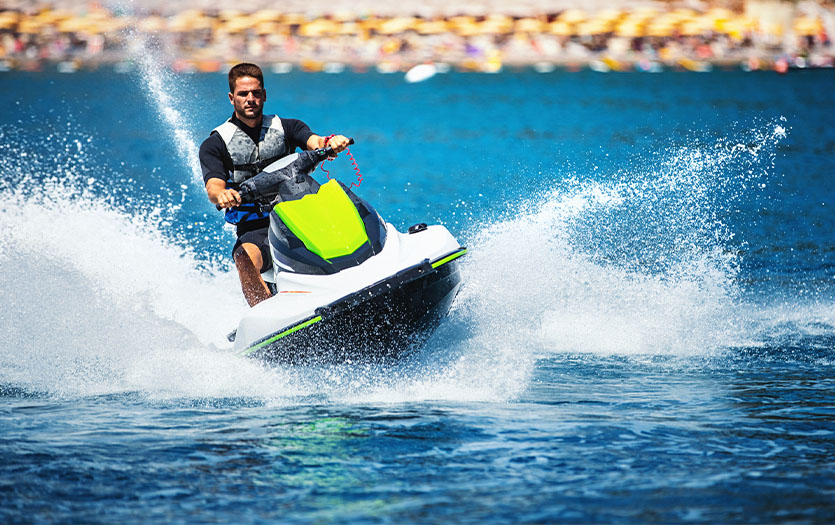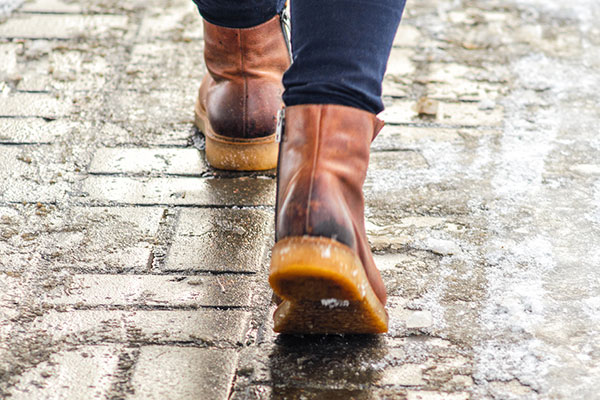
This post was written by Kyle Carlson, DO, Orthopedic Surgery, OrthoNortheast and Lindsay Neff, NP, PPG – Orthopedics, Warsaw and Goshen.
Summer brings longer days, warmer weather and plenty of opportunities to get active outdoors. From beach volleyball and kayaking to hiking and jet skiing, there's no shortage of ways to enjoy the season. But with increased activity comes increased risk. Summertime is also the peak season for orthopedic injuries, particularly those affecting the bones, joints and muscles. Understanding the most common summer-related injuries and how to prevent them can help you stay safe while soaking up the sun.
Common summertime orthopedic injuries
Orthopedic injuries in summer are often linked to sudden movements, awkward falls or overuse.
-
Sprains and strains are among the most frequent, typically affecting the ankles, knees or wrists. They occur when ligaments or muscles are stretched beyond their limits, such as during hikes, sports or uneven ground encounters.
-
Fractures or broken bones can result from direct trauma or falls and are common in higher-risk activities like biking, skateboarding or diving.
-
Shoulder injuries are another major concern, particularly in water sports like swimming, surfing and water skiing. These can include dislocations, rotator cuff tears and tendonitis caused by repetitive overhead motions.
-
Knee injuries, such as ACL or meniscus tears, are common in pivot-heavy sports like wakeboarding or beach volleyball, where sudden stops and sharp turns strain the joint.
-
Back injuries, especially muscle strains or spinal stress, can happen when lifting heavy gear, diving improperly, or using poor posture on watercraft.
How to avoid water sport injuries
Preparation and awareness are your best tools for injury prevention, especially around water.
Before you dive in
-
Always warm up before activity to increase blood flow and flexibility. Stretching helps prepare your muscles and joints for motion.
-
If you're diving or jumping into the water, always know the depth first. Many spinal injuries occur in shallow or unfamiliar water.
-
It's also essential to wear the proper gear. Well-fitting life vests, helmets for jet skiing, and water shoes with traction can all help minimize risk.
During water sports
-
Use the correct form and technique for your sport. Poor technique can put excess strain on your joints.
-
Be mindful of how your body feels, and avoid pushing through fatigue. Tired muscles are less effective at protecting joints, increasing your risk of injury.
-
Repetitive overhead movements, like swimming or kayaking, should be balanced with breaks to avoid overuse injuries such as shoulder tendonitis.
Pay attention to red flags
-
Persistent pain, swelling, bruising or a feeling of instability in a joint should not be ignored.
-
Popping sensations, weakness, or numbness are signs to stop what you're doing and seek evaluation from a medical professional.
Water sport–specific injury tips
Different activities come with their own sets of risks, but a few preventive strategies can make a big difference:
-
Swimming can cause shoulder impingement and tendonitis. Strengthen the rotator cuff and vary your strokes to reduce repetitive stress.
-
Wakeboarding injuries frequently include ACL tears and shoulder dislocations. Learn proper landing techniques and use the correct stance to protect joints.
-
Jet Skiing can lead to spinal compression or wrist injuries. Maintain a stable seated posture and avoid bracing your arms on impact.
-
Paddleboarding can cause low back strain and shoulder overuse injuries. Focus on core strength, use proper paddling technique, and switch sides frequently to balance muscle use.
-
Diving poses serious risks for head and spinal injuries. Always check water depth before diving. When entering unfamiliar water, go in feet first to avoid hitting the bottom or hidden obstacles.
What to do if you get hurt
If you experience a mild injury, start with the R.I.C.E. (rest, ice, compression and elevation) method. Over-the-counter anti-inflammatory medications can help reduce pain and swelling. However, if symptoms persist for more than 48 hours or interfere with your ability to move, it's best to see an orthopedic specialist for a proper evaluation and treatment plan.
Seek medical attention if you're experiencing any of the following:
-
Severe or increasing pain
-
Significant swelling or bruising
-
Inability to move or bear weight on a limb
-
Signs of a fracture or joint dislocation
-
Ongoing numbness or muscle weakness
Early intervention is usually crucial for achieving a faster and more complete recovery.
Key takeaways
Summer is an ideal time to stay active and enjoy outdoor fun, but orthopedic injuries can quickly sideline even the most enthusiastic athlete. Stay safe by warming up, using the right gear, practicing proper technique and listening to your body.
Rest days are just as important as play days, and pain is always a sign that something needs attention. If an injury does occur, don't delay treatment. Early evaluation can prevent long-term complications and get you back to the activities you love sooner.
Need expert care for a summer injury?
Our orthopedic specialists are here to help. To schedule orthopedic care in Allen County, call Ortho NorthEast at 260-484-8551 or request an appointment here. Visit this page to find orthopedic care outside of Allen County.
Parkview Ortho Express also offers convenient same-day orthopedic care at two northeast Indiana locations. If you're uncertain whether an orthopedic walk-in clinic is right for you, call us at 260-266-4007 to discuss your needs before you arrive.



